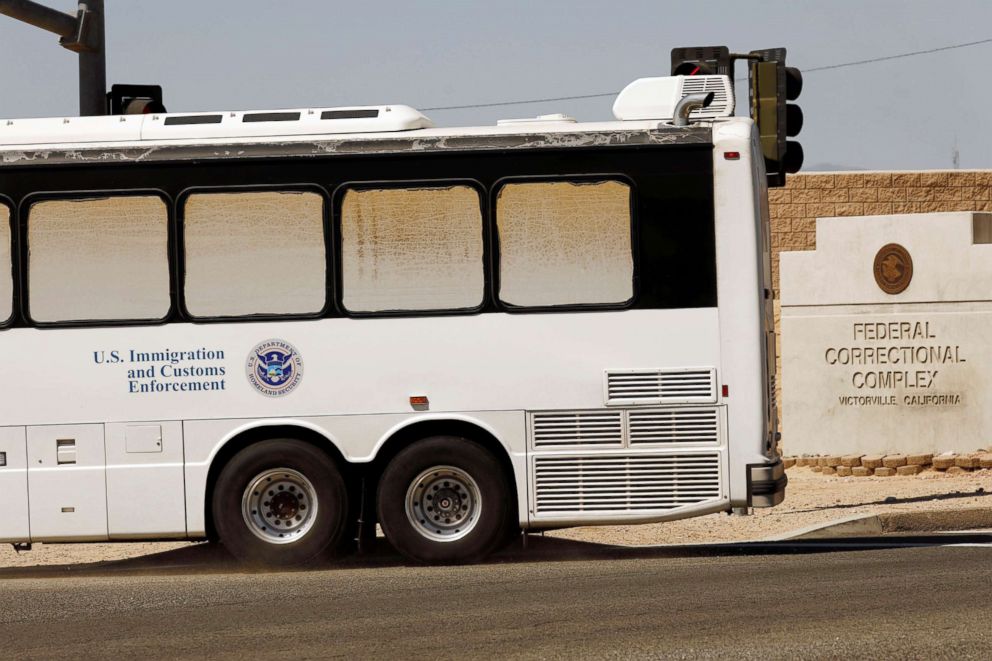'Zero-tolerance' approach not very effective, experts say
Comes amid debate over Trump administration's immigration policy.
The Trump administration’s “zero-tolerance” approach to immigration and the separation of immigrant families at the border has faced a number of issues. Zero-tolerance may be a catchy idea when elected officials are working against issues of law and order, but when it comes to actual implementation, experts say it leaves a lot to be desired and, in fact, can be downright harmful.
From people outraged by the treatment of children who were removed from their parents to the conflicting statements from members of the administration as to whether or not it was intended to serve as a deterrent, the policy has faced some hurdles.
But that hasn’t stopped President Donald Trump from touting it.
“If we took zero-tolerance away, you would be overrun as a country. You'd have millions of people pouring through our border. If we took zero-tolerance away, everybody would come, right now. They'd be getting their little belongings, unfortunately, and they would be heading up. You would have a run on this country the likes of which nobody has ever seen,” Trump said at Thursday’s cabinet meeting.
While Trump appears convinced at its effectiveness, law enforcement experts say that it isn’t actually effective.

John Cohen, a former acting undersecretary at the Department of Homeland Security (DHS) and current ABC News consultant, said that it places a great burden on both law enforcement and the court system when there is an influx of criminals to arrest, detain, and send to court.
“Zero-tolerance policies can quickly overwhelm the resources of the criminal justice system,” Cohen told ABC News. “Quickly jails will become overfilled. Enforcement officers will be taken off patrol and used to transport and process the sudden mass increase in people being arrested and detained. The courts will become inundated and the result is in order to focus on these people who committed minor crimes, police, and prosecutors will be diverted from dealing with more serious issues.”
Cohen said that law enforcement leaders have questioned the deterrence “value” of such policies because, in addition to the drain on resources, they’ve found that criminals adapt their methods.
“Really quickly criminals will change the way they behave,” he said, citing cases where drug dealers change locations or pick up times, “therefore making enforcement actions useless.”
A past use case
One prior example of a zero-tolerance approach being used in law enforcement was in New York City in the early 1990s. Robert Boyce, a recently retired New York Police Department chief of detectives who is now an ABC News consultant, told ABC News that the force used that policy back in the day because “quality of life in the city was horrible.”
What the zero-tolerance approach meant in that setting was that “whoever was cited for a violation, they got a summons,” which included anyone found with an open container, playing dice or gambling, or other offenses typically viewed as minor.
“When we first started it -- it became enormously effective, we saw crime drop dramatically throughout the city,” Boyce said.
He said that zero-tolerance approaches should only be used “when you have complete chaos, you have public disorder,” and “it should be considered a short-term policy.”
Boyce said that the situation at the border is not comparable to that of New York City in the 1990s, and therefore a zero-tolerance approach isn’t as appropriate.
“You have a distinct goal with this you want to make the city safer, and I think the immigration issue needs a more broad approach to that," he explained.

Importance of timing and messaging
In order for any “zero-tolerance” policy to take effect and stop people from committing crimes, the criminals have to know that such uniform consequences are handed out, David Kennedy, a criminal justice professor at John Jay College, told ABC News.
“If zero-tolerance or any other law enforcement policy is designed to deter than it can’t possibly work until people know that that’s what’s waiting for them,” said Kennedy, who also heads the school’s center for study on violence prevention, called the National Network for Safe Communities.
“If people don’t know the stove is hot, they're going to touch it and one of the things that means is any sudden and dramatic change in law enforcement practice is going to cause a lot of collateral harm before people understand that the world around them has changed,” he added.
Even if the prospect of being held in American facilities for long stretches of time or being separated from their children remains in place, Kennedy said that unless the issue causing individuals to flee in the first place is addressed, they won’t stop coming to the United States.
“If people are fleeing horrendous levels of say gang violence in their country of origin," he said, "and they're more afraid of that than any legal consequence that awaits them, then they're going to keep coming."




